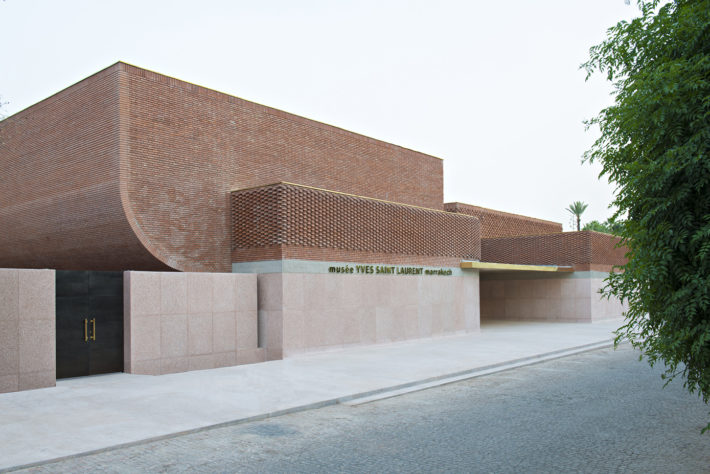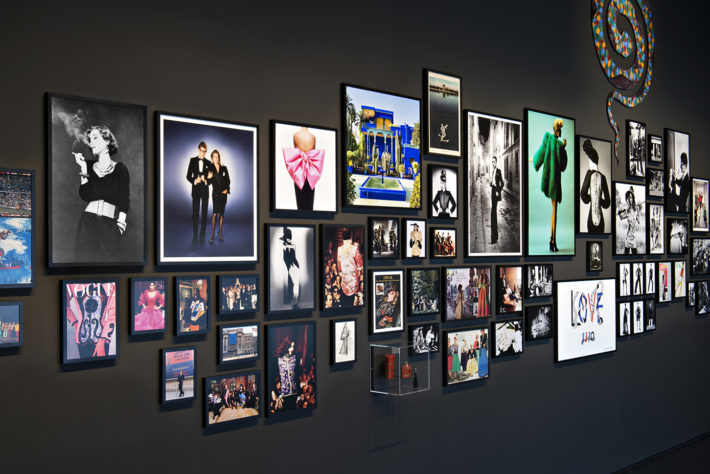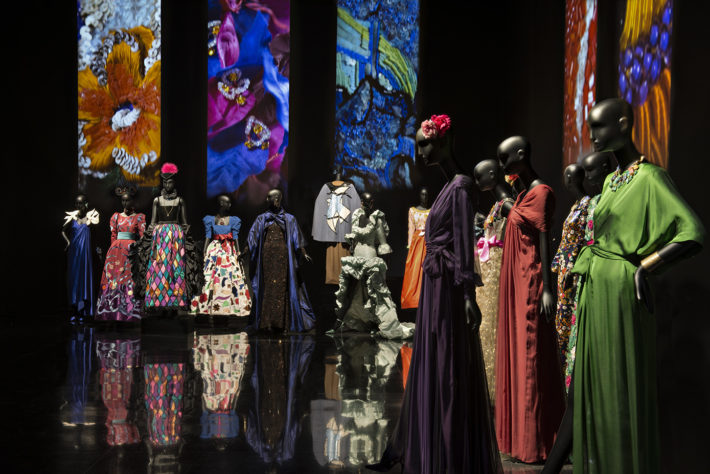19 March 2018
Opened last October, two weeks after the inauguration of its namesake in Paris, the Musée Yves Saint Laurent in Marrakesh is located just a few steps from the former ultramarine blue residence of the fashion designer, in the exotic Majorelle Garden, now the seat of a space devoted to art, handicrafts and Berber traditions—a source of inspiration for YSL ever since his first visit to Morocco in 1966. Designed by Studio KO, the Musée YSL has an external structure of red brick that mimics the folds and pleats in the weave of a piece of fabric and an interior with an area of four thousand square meters comprising exhibition spaces, an auditorium, a library, a boutique and a cafeteria. The two museums, in Paris and Marrakesh, share an impeccable collection of five thousand items of clothing, thousands of drawings and books and over fifteen thousand accessories that Saint Laurent considered indispensable. The one in Marrakesh, strongly desired by Pierre Bergé, YSL’s lifelong partner, takes visitors on a true journey to the heart of the inspirations most characteristic of the couturier’s imposing body of work—among them his passion for cinema and theater, out of which an extraordinary production of costumes had flowed ever since the fifties—and serves as a cultural showcase able to host exhibitions of any kind. The first item you encounter on entering the museum is the dress he created as a homage to Piet Mondrian in 1965, bearing witness to the fundamental influence that the world of art had on Saint Laurent, an ardent collector, and on his work. It is followed by a series of iconic photographs of the designer and his muses, from Marisa Berenson to Catherine Deneuve, which punctuate a timeline of acclaimed successes. In the central section, fifty original garments—shown in rotation from amongst the huge number preserved in the archives—emerge from the darkness, picked out by a light that emphasizes their uniqueness and details. Chosen personally by Bergé and displayed one next to the other, they become the protagonists of a timeless fashion show and still lay claim today to the right of women to a wardrobe capable of reflecting an image of power and sensuality.

Exterior of the museum, © Fondation Jardin Majorelle. Photo: Nicolas Mathéus.

Exterior of the museum, © Fondation Jardin Majorelle. Photo: Nicolas Mathéus.

Eastern side of the mYSLm. © Fondation Jardin Majorelle. Photo: Nicolas Mathéus.

Biography in pictures, YSL Room, mYSLm. © Fondation Jardin Majorelle. Photo Nicolas Mathéus.

View of the YSL Room. © Fondation Jardin Majorelle. Photo: Nicolas Mathéus.

The research library of the mYSLm. © Fondation Jardin Majorelle. Photo: Nicolas Mathéus.

View of the exhibition Jacques Majorelle’s Morocco, mYSLm. © Fondation Jardin Majorelle. Photo: Nicolas Mathéus.

Entrance of the photograph gallery, mYSLm. © Fondation Jardin Majorelle. Photo: Nicolas Mathéus.

Entrance of the YSL Room, mYSLm. © Fondation Jardin Majorelle. Photo: Nicolas Mathéus.

Hall of the mYSLm, Oiseau Sénoufo (Senufo Bird), Pierre Bergé and Yves Saint Laurent’s first acquisition in 1960. © Fondation Jardin Majorelle. Photo: Nicolas Mathéus.

“Le Cabinet de Curiosités,” YSL Room, mYSLm. © Fondation Jardin Majorelle. Photo: Nicolas Mathéus.

“Le Cabinet de Curiosités,” mYSLm. © Fondation Jardin Majorelle. Photo: Nicolas Mathéus.

View of the Grand Hall, mYSLm. © Fondation Jardin Majorelle. Photo: Nicolas Mathéus.

Yves Saint Laurent, Dar el Hanch. © Pierre Bergé.

Yves Saint Laurent. © Pierre Bergé.

Yves Saint Laurent, Jamaa el Fna Square. © Reginald Gray.